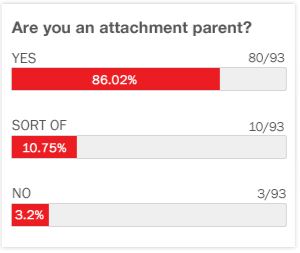
I recently visited the home of a family of four. Two parents a three year old and an 8 month old infant. The place was abuzz with activity, sound and what seemed like a very loving & caring environment.
After several minutes of getting acquainted, I began looking and listening a bit closer. Of particular notice were several monitor screens, flashing simultaneously in adjacent rooms including a large screen T.V. with what looked like the well known “Baby Einstein” series, a smaller “personal” video screen flashing a numbers and letters game and, finally, a soundless T.V. monitor in the kitchen with a popular daytime program for an adult audience.
Soon, I was having some difficulty sorting out what sounds were coming from which direction and who was actually watching or interacting with these electronic devices.
In order to conduct my educational program it was necessary to turn off the excess stimuli in order to focus on the task at hand. Once the devices were off and a very efficient nanny whisked the little ones away I had a sense of personal relief. The lack of sound and visual activity was palpable.
Coincidently, I had come across several research articles on the issue of “T.V. Time” in homes with infants and children and thought it time to take a further look.
A New York Times article from 1999 caught my attention when I read a rather stern message from The American Academy of Pediatrics (AAP) dealing with TV exposure (for infants & children) in the home. I was reminded of their suggestion to parents “to all but ban television watching for children less than 2 years of age.” It also suggested that parents fill out a “media history” which would be reviewed by the pediatrician at the next well baby/child visit. At first look, I thought this to be rather harsh and, perhaps, unrealistic. Then I read on.
Given that this article in the AAP’s journal Pediatrics is now 13 years old it seemed obvious that some follow-up research would be available to the public.
There certainly has been. The Center on Media and Child Health at The Harvard University Education Department reviewed a journal article from the American Behavioral Scientist which reviewed the very issue of TV exposure on infants and children (birth -12 yrs.) with the endpoint being TV exposure’s influence on developmental outcomes. Survey participants were contacted, randomly, by phone and asked a series of questions regarding TV exposure in the home during an average day/evening.
The study included households with a total of 756 infants, toddlers and children up to 12 years of age. When asked more specifically what the reasons for the amount of TV viewing, answers included: (0-2yrs): heavy TV exposure was significantly related to the belief that educational TV is important. In addition, for those children 3-4 years and 5-6 years, respectively, parents were honest in stating that TV was a good form of babysitting, relieving them of having to constantly interact with their child.
With completion of this 2005 study, the conclusion revealed: “Parental attitude towards TV viewing and household TV availability were common determinates of heavy TV exposure among young children.” Finally, the researchers determined that “children in heavy-TV viewing households spent less time reading and were more likely to be unable to read.”
To add to this, the AAP published in this month’s journal, Pediatrics, a new wrinkle to the issue. The article, entitled Background Television in the Homes of US Children. This very current and well designed study looks specifically at times when the TV is on but the child is attending to another activity (my italics). Based on previous research, this background TV exposure is negatively associated with children’s cognitive functioning and social play.
The study states that U.S. children (8 mo. To 8 yrs) are exposed to nearly 4 hours of background TV on a typical day. Younger children and African American children are exposed to more background TV. Again, this study was conducted by phone interviews with parents who were able to give a fairly accurate number of background TV hour exposures. It revealed that the average U.S. child was exposed to 232.2 minutes of background TV on a typical day.
The final conclusion of the study? Quoting the journal Pediatrics: “Although recent research has shown the negative consequences associated with background television, this study provides the first nationally representative estimates of that exposure. The amount of exposure for the average child is startling. This study offers practitioners potential pathways to reduce exposure.”











We have definitely tried to limit the exposure our baby has to television because there definitely seems to be more negative effects than positive.